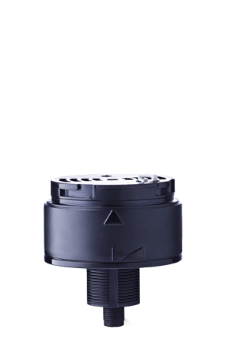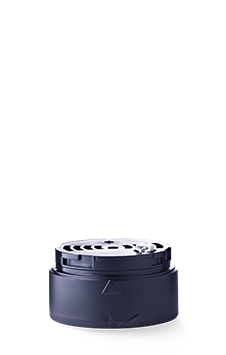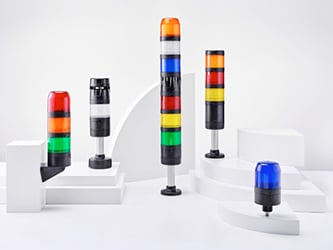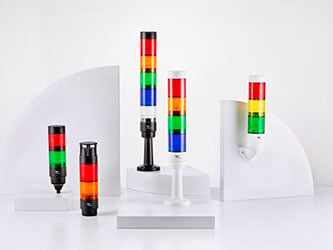Boost my light: IO-Link for stack lights CT5 and PC7
Auer Signal's flagship stack lights CT5 and PC7 are now available for IO-Link control.
The new PC7MC5IO and PC7BLVIO base modules as well as CT5MC5IO and CT5KR1IO enable the implementation of our PC7 and CT5 signal towers into IO-Link communication systems. Additionally, white IO-Link bases are available for CT5 signal towers.
 |
 |

|

|
|
PC7MC5IO |
PC7BLVIO IO-Link base with terminal |
CT5MC5IO IO-Link base with M12 5-pin |
CT5KR1IO |
Key benefits of Auer Signal IO-Link solutions
- Clever engineering in combination with highest demands on quality and design
- Most cost effective and user friendly IO-link signal tower solution on the market
- Simplest operation for IO-Link application
- Integration of IO-Link technology directly into the base
UPGRADES FOR STEADY LIGHT MODULES
With the use of the new IO-Link bases, existing steady light modules of the PC7 (PC7DC) and CT5 (CT5DC) can benefit from the full potential of modern LED technology: The functions flashing, strobe and double strobe light can be additionally reproduced with the cost-effective standard steady light modules. This solution optimizes the procurement process, increases flexibility and minimizes the costs for you signal tower despite the highest level of functionality.

EASIEST PARAMETERIZATION ON THE MARKET
Signaling devices are an important component in automation. For this reason, our IO-Link solution relies on the lowest possible process data with just 3 bytes for full range of functions. This low demand for process data and the particularly simple programming make it possible to maximize the potential of the surrounding automation landscape. 
IO-LINK INTEGRATION DIRECTLY INTO THE BASE
The IO-Link technology is integrated directly into the base and follows with this approach the principle of value engineering: Thus, neither an additional IO-Link module is necessary, nor is there any additional effort for assembly, order processing or stock keeping. The visual appearance of the signal tower is identical to that of a conventional tower light without IO-Link control.

EASY CHANGE-OVER OF EXISTING SIGNAL TOWERS
Currently implemented PC7 and CT5 signal tower modules are compatible with the new IO-Link bases. A simple upgrade from conventional control to IO-Link control is easily possible. The purchase of a new signal tower is not necessary. The conventional terminal connection makes the change-over process particularly suitable for retrofits.
Configure your IO-Link signal tower
The signal tower configurators on our website let you configure your customized IO-Link signal tower according to your requirements. You will get the selected part numbers while configurating and can download the 3D-models, save the product to your bookmarks or send an inquiry directly from the configurator to our Customer Service.
What is IO-Link?
IO-Link is an automated communication system for industrial applications. The communication takes place via a standardized system (IEC 61131-9) and can therefore be used worldwide. It can also be easily integrated into existing systems.
What does IO-Link stand for?
The abbreviation IO stands for Input and Output. Through this abbreviation it is made clear that IO-Link systems are bidirectional communication signals that are processed and controlled.
How does IO-Link work?
As the abbreviation IO indicates, IO-Link communication systems are signals that are processed and controlled.
A central role in IO-Link communication systems play:
- IO-Link master
- IO-Link sensors
- IO-Link actuators
- Unshielded standard cable
- Software for parameterization
In an IO-Link network, the IO-Link master establishes the connection to all existing IO-Link devices (sensors and actuators). Each of these devices is connected to the IO-Link master via an IO-Link port. IO-Link is therefore not a fieldbus system, but works via point-to-point communication.
The IO-Link master receives the signals, i.e. the IO-Link protocol of the IO-Link sensors and actuators, processes them and can then transmit them back to the sensors and actuators to issue commands. This bidirectional communication works via the 3-wire connection and M12, M8 or M5 connectors.
Advantages of IO-Link
IO-Link as a further development of conventional fieldbus systems offer a variety of advantages:
- The 3-wire technology enables communication over long distances, which is particularly advantageous in industrial plant engineering or in large buildings.
- IO-Link communication systems are fieldbus-independent and thus compatible with existing fieldbus systems.
- Particularly simple wiring thanks to unshielded three-core cables.
- In an IO-Link system, all parameter data is processed decentrally on a server and read by the master. This enables simple and fast parameterization of devices. Time-consuming parameterization on the device directly is therefore not necessary.
- Due to the decentralized system, simple remote maintenance is possible.
What do IOD and IODD stand for?
When it comes to IO-Link systems, the abbreviations IOD and IODD often come up. They stand for devices that are integrated into an IO-Link network and for their product descriptions.
IOD = IO-Device
IODD = IO Device Description





